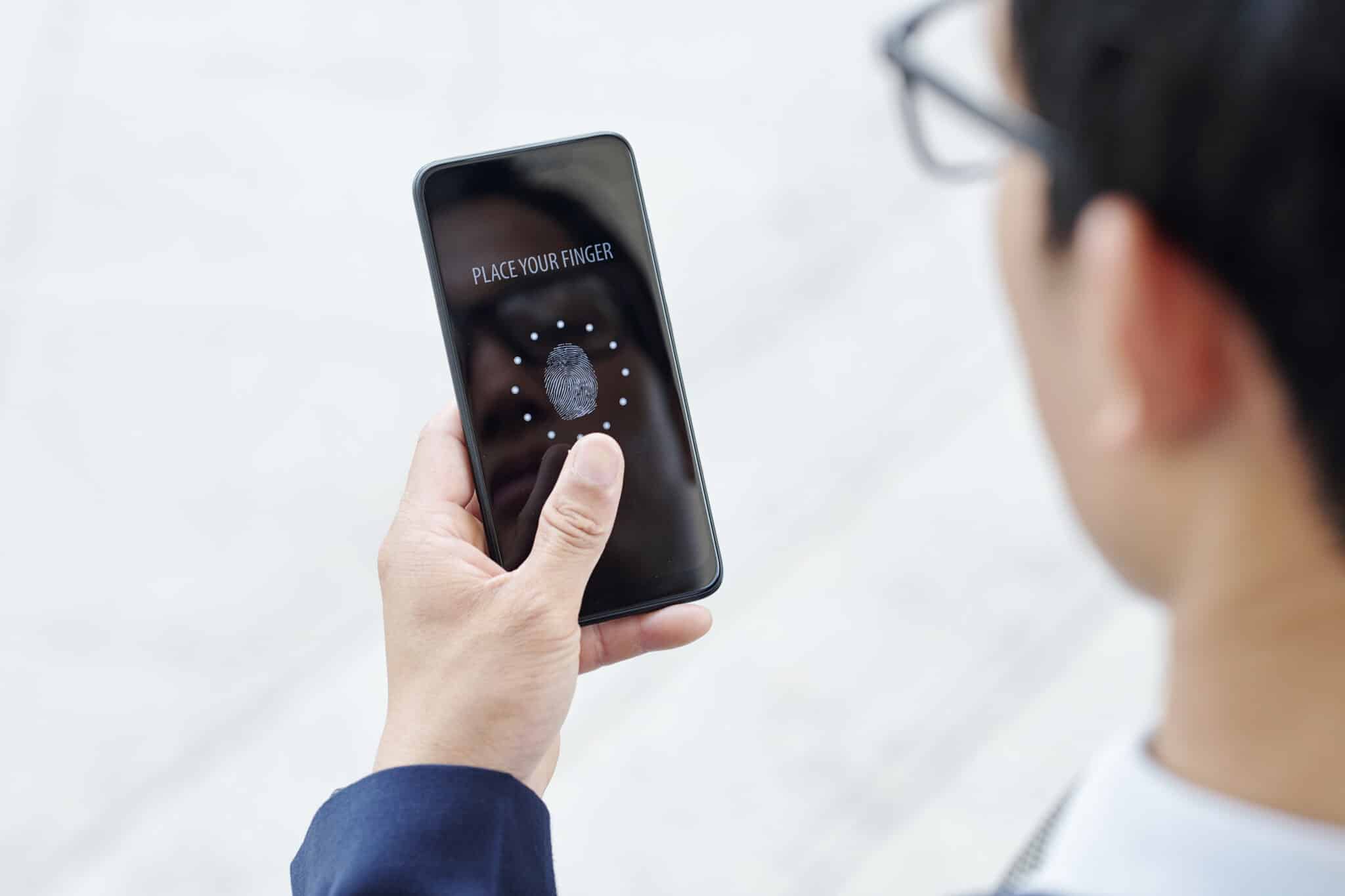Cybersecurity Awareness Month: Turning On MFA
Strong cybersecurity is important in today’s digital world. Cyber threats are getting more complex, so just using passwords is not enough to protect sensitive information. Multi-factor authentication (MFA) has become a key method to keep online accounts and valuable data safer by introducing a second authentication requirement for access. It adds another level of additional security. In today’s digital landscape, the significance of Multi-Factor Authentication (MFA) cannot be overstated. As cyber threats grow in sophistication, traditional password protection falls short in safeguarding sensitive data. By requiring an additional step beyond passwords, it serves as a crucial defense mechanism against unauthorized access and potential breaches.
As we observe Cybersecurity Awareness Month, enabling Multi-Factor Authentication stands out as a proactive step individuals and organizations can take to bolster their online security posture.
Understanding Multi-Factor Authentication (MFA)
Multi-factor authentication (MFA) is an important way to keep your online accounts safe by requiring multiple pieces of evidence to confirm your identity in more than one way. This layered approach makes it harder for thieves to access your information and prevents phishing attacks. Adaptive authentication uses different tests, like something you have or something you know, to add a second form of requirement for extra security. Multifactor authentication (MFA) can use software tokens or physical devices to protect your accounts strongly. Knowing about multifactor authentication is important. It helps you keep your sensitive information secure and use the right security settings. In today’s risky online world, Two-Factor offers an extra layer of security for everyone.
The Basic Principles of MFA
MFA works by using at least two different types of factors to check a user’s identity. These factors are grouped into three types:
- Knowledge factors: This is something the user knows, like a password or PIN.
- Possession factors: This is something the user has, such as a security token or smartphone.
- Inherence factors: This is something the user is, like a fingerprint or facial scan.
By asking for a mix of these factors, MFA makes sure that if one factor is stolen, it is still hard for someone to get in without the others and access your personal information. For instance, even if someone steals your password, they can’t enter your account without also having your mobile phone device to get the second form of code, which may be sent via text message.
Different Types of Authentication Factors
MFA solutions use different ways to confirm identity for better security. Here are some examples:
- Knowledge Factor: This can be a password, PIN, or answers to security questions. Passwords are common but weak against attacks. Stronger options include randomly created one-time passwords.
- Possession Factor: This includes physical and digital items. For example, hardware tokens, apps on smartphones that create codes, and messages sent by email or SMS with verification codes.
- Inherence Factor: These rely on unique body traits to check identity. Examples include fingerprint scans, facial recognition, iris scans, and voice recognition.
The best MFA systems mix factors from different groups to provide the highest level of security.
What are the different types of MFA methods available?
Different MFA methods include SMS codes, biometric verification, security keys, push notifications, and authenticator apps. These methods add layers of security beyond just passwords, making it harder for unauthorized users to access sensitive information or accounts.
The Role of MFA in Enhancing Cybersecurity
MFA is very important for boosting cybersecurity. It adds another layer of safety beyond just passwords. This is vital now because we live in a connected world where online dangers are always changing and becoming smarter.
With Two-Factor, you must use more than one way to prove your identity. This makes it very hard for bad people to get unauthorized access to private information. Even if they get one factor, like a stolen password, it’s still tough for them to break in.
How Multi-factor Authentication Protects Against Common Cyber Threats
MFA is a strong way to protect against many online threats. Here’s how it works:
- Phishing Attacks: Multi-factor authentication stops phishing by asking for an extra factor besides just a username and password. Even if someone tricks a user into giving their login details, the attacker will still need the second factor. This is often linked to a physical device that the attacker does not have.
- Brute-Force Attacks: Brute-force attacks guess passwords one by one until they succeed. With Multi-factor Authentication, even if an attacker figures out a password, they still can’t get in without meeting the extra requirements.
- Credential Stuffing: Cybercriminals may use stolen accounts from one site to try to break into others. Multi-factor Authentication prevents this because it needs a different second factor for each login attempt, making the stolen credentials useless.
Implementing MFA: Best Practices and Strategies
Implementing Multi-Factor Authentication well means picking the right tools and getting users to use them.
When choosing a solution, you should think about things like security compliance requirements, how easy it is for users, and how well it works with current systems. Also, educating and training users is very important. This helps the move to Multi-Factor Authentication go smoothly and makes sure people use it regularly throughout the organization.
Key Considerations for Choosing MFA Solutions
Choosing the right MFA solution is important. It helps keep your system secure while causing less disruption. Here are some key points to think about:
- User Experience: Pick solutions that provide good security but are also easy to use. Select methods like push notifications or one-time codes. This will help users adopt the system more easily.
- Security Level: Look at how sensitive the information is that needs protection. Use a Multi-Factor Authentication solution that offers the right level of security. For very sensitive information, consider stronger options like hardware tokens or biometric methods.
- Adaptive MFA: Check out adaptive solutions. These use machine learning to look at risk factors. Adaptive Multi-factor Authentication changes authentication needs based on things like where the user is or how they behave. This way, you can keep security high while maintaining user experience.
Integration of MFA into Existing Security Systems
To avoid problems and get the best results, it’s important to connect Multi-Factor Authentication (MFA) seamlessly with your current security systems. First, check your existing setup and find any compatibility problems before you use MFA.
Work together with your IT team or a cybersecurity expert to set up MFA in your access management systems. This means you should define access rules, add users, and choose the right authentication methods.
During this process, good communication and training for users are really important. Offer simple instructions and support to help users transition smoothly and reduce any disruptions in system access.
Challenges and Solutions in Multi-Factor Authentication (MFA) Deployment
While Multi-Factor Authentication has great benefits, organizations can face some challenges when putting it in place.
Common problems are users resisting because they think extra steps are a hassle and there might be technical issues when integrating it. To overcome these challenges, clear communication is important. Comprehensive user training and choosing easy-to-use solutions can also help.
Overcoming User Resistance
User adoption is key for two-factor to work well. To reduce pushback, try these tips:
- Communication: Clearly explain why Two-Factor is good and why it is important to protect sensitive data. Share real-life cases of data breaches. Make it clear that it adds an extra layer of security instead of being a hassle.
- User Training: Give users thorough training on how it works. Make sure they feel confident using different methods like setting up and using mobile apps, hardware tokens, or push notifications.
- Ease of Use: Choose Two-Factor solutions that are easy to use. Simple mobile apps, push notifications, and single sign-on features can make user authentication easier and encourage people to use them regularly.
Addressing Technical Challenges in MFA Implementation
Technical issues can come up when setting up Multi-Factor Authentication (MFA), especially while connecting to current systems. Here are some ways to handle them:
- Compatibility: Check before starting that your chosen options work well with your current setup, programs, and operating systems. Make sure they support different types of authentication like software tokens, hardware tokens, and biometric methods.
- Scalability: Pick an option that can grow easily to keep up with more users and devices in the future. Cloud-based options usually offer better adaptability compared to on-premises solutions.
- Support: Make sure the provider you pick offers good technical support. This support will help with any connection or problem-solving issues that come up. It’s important to have quick help available, especially during the first phase of implementation.
The Future of MFA and Cybersecurity Trends
In the future, we can expect more passwordless ways to log in with things like fingerprints and secure codes that enhance access control. There will also be AI-driven risk checks and adaptive MFA that can adjust based on the situation, monitoring user activity to improve security measures. Plus, there will be more attention on protecting user data and privacy. Keeping up with these changes will be important for organizations to stay strong in their cybersecurity efforts.
Advances in Biometric Authentication
Biometric authentication is moving forward quickly. It gives safer and easier options than old methods.
Now, smartphones and laptops have built-in sensors. These sensors can scan fingerprints, recognize faces, and even see irises. Mobile apps use these sensors to secure user authentication. Also, physical tokens like smart cards are adding biometric features for more security.
The rise in accuracy and lower costs of biometric tech is helping it be used more in Two-factor solutions. As these methods get better, they will be even more important for securing access to digital assets.
The Role of Artificial Intelligence in MFA
Artificial intelligence (AI) is changing multi-factor authentication (MFA) by making it smarter and more flexible.
Machine learning algorithms study how users behave, what devices they use, and their network activity. They create profiles that show risks and find unusual behavior right away. Adaptive authentication uses this information to change security steps when needed.
For instance, if a login attempt happens from a strange place or a new device, adaptive authentication may ask for extra proof. This could be a one-time code sent to the user’s mobile device.
Conclusion
In today’s online world, Multi-Factor Authentication (MFA) is very important for protecting sensitive information from cyber threats. MFA uses different ways to prove identity. This makes security stronger and helps reduce the chances of data breaches. As technology changes, it is essential to add MFA to current security systems for better protection. It is important to deal with user doubts and technical problems for MFA to work well. In the future, new methods like biometric authentication and Artificial Intelligence will influence Multi-Factor Authentication and cybersecurity. Remember to put Multi-Factor Authentication best practices into action to improve your digital safety.
Frequently Asked Questions
What Are the Most Common Types of MFA Used Today?
Common Multi-Factor Authentication methods are one-time codes sent through SMS or email. Some also use time-based codes from authenticator apps, like Google Authenticator or Microsoft Authenticator. There are also hardware security keys that connect to a device. These methods give a second factor of authentication. They add more safety to accounts beyond just having a password.

Zak McGraw, Digital Marketing Manager at Vision Computer Solutions in the Detroit Metro Area, shares tips on MSP services, cybersecurity, and business tech.

